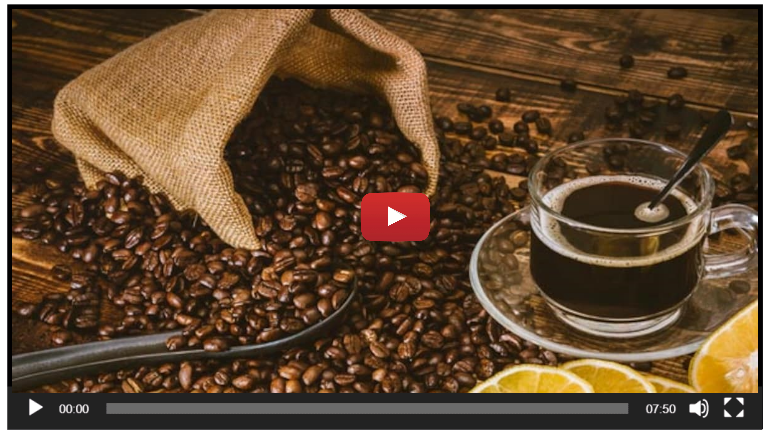American Media Group Telegram Channel. Everything You Need To Know! Find the latest AMG-NEWS breaking news, videos, pictures and latest updates HERE: https://t.me/AMGNEWS2022
Scientific Research includes studies from The Emory University School of Medicine, Atlanta, the Diabetelogia journal, Garvan Institute of Medical Research, Sydney, Australia and University of Bialystock, Poland.
Vegetables are a crucial part of all of our diets. At least one meal of the day must consist of vegetables, and the daily intake must be 2.5 cups of vegetables. They are a major source of obtaining the daily needed vitamins and minerals for the body.
Different types of vegetables can be prepared in a variety of ways to gain nourishment. They are usually low in calories and very healthy. Thus, they can be had by everyone.
But some vegetables may have varying amounts of nutrients that can be risky for one’s diabetic health. Some vegetables which are high in starch, fats, carbs, and calories are to be avoided. We will discuss some of the unhealthy choices in the list given below.
9 vegetable for diabetics to avoid
Here is a list of vegetables and some common vegetable products or ways of preparations to avoid ensuring that the diabetic blood sugar levels are not affected.
Diabetes is a growing condition, and a good diet is essential to manage overall health. Vegetables form a huge proportion of the daily meal and must be done without any potential risks.
Do you want to see the lethal veggie, INFLAMING blood sugar in millions of innocent, unsuspecting people?
Here are some that you should avoid:
1. White potatoes
You might have heard about this vegetable being a bad one for diabetics. They are filled with carbohydrates and starch that can cause significant harm to your diabetic blood sugar levels.
Potatoes paired with any other vegetable or grain can make the whole meal a carbohydrate-dense one. It also has a high glycemic index of around 86 in every 100 grams of potatoes.
Apart from affecting your blood sugar levels, potatoes are also bad for your body’s blood pressure. Excess consumption of white potatoes can lead to the heightening of blood pressures as well.
Any form of it, be it baked, roasted, boiled, fried, or so on, potatoes are almost harmful to blood sugar management in all ways. They can cause spikes in the blood sugar that can, in turn, lead to severe complications in the body.
In addition to this, potatoes are also responsible for weight gain. Keeping the body weight under control is essential for people diagnosed with diabetes. Thus, having potatoes is not a good option for you.
Although potatoes are also packed with many essential nutrients, the excess number of carbs and calories in this vegetable overshadows those vitamins, minerals, and antioxidants.
One medium-sized potato has around 40 grams of carbs. This is one of the highest recorded numbers of carbs in one vegetable. Cooking them in most of the ways can increase their overall glycemic index too.
One medium-sized potato has around 40 grams of carbs. This is one of the highest recorded numbers of carbs in one vegetable. Cooking them in most of the ways can increase their overall glycemic index too.
Moreover, frying them increases their unhealthy fat contents as well.
All in all, potatoes are one must-avoid vegetable for diabetic patients, especially regularly. Portion control for the consumption of potatoes can be carried out for better results but must be done with proper prior caution.
2. Celery
Now, this is one vegetable that is good for the body because of its low calories, low carbohydrates, lots of water and fiber content, etc. However, the way celery reaches you is what makes it a bad one for one’s health.
Celery is a non-starchy vegetable that can provide you with several different vitamins, minerals, and antioxidants. It is crunchy, full of water, and versatile to be included in soups, salads, wraps, sandwiches, etc.
But the growing and delivery conditions of this vegetable are what make it a risky one. Celery is a tall-growing product that tends to be more affected by pesticides. It contains more amounts of pesticides and harmful chemicals.
The harvesting process of celery also adds more danger and bad elements to it. Such conditions of being in the dirt and harmful chemicals can make a vegetable considerably unhealthy for one.
These can also be worse for diabetic patients as they already have lower immunity power. Thus, diabetic people must take these as warning signs.
Celery can also cause allergic effects among some people. If you tend to have these effects as well, then you should avoid having celery.
3. Butternut squash
Now, this might be an uncommon vegetable item in your shopping list, but it is rather better that way if you are a diabetic. This is not a very healthy vegetable if you have fluctuating blood sugar issues.
Although butternut squash has a good amount of many nourishing nutrients, at the same time, it also has a lot of carbohydrates. This can hamper the body otherwise and lead to instability in maintaining blood sugar levels.
Although this vegetable has fiber too that can be beneficial for health, the proportion of fiber in this vegetable is too less compared to the number of carbs found in it.
Thus, eating butternut squash can affect your body more than it can benefit it.
► Medieval Lessons: The Most Powerful Natural Painkiller That Works Like Morphine That You Can Make at Home. Video below:
4. Green peas
Peas fall under the legume family but are also classified commonly as vegetables.
Peas fall under the legume family but are also classified commonly as vegetables.
Like most other unsafe vegetables for diabetes patients, green peas are also categorized as harmful because of their carbohydrate content. Eating too many green peas can contribute to excessive amounts of carbohydrates in the body, which can, in turn, increase your blood sugar levels.
A cup of green peas tends to contain 20 grams of carbohydrates. This can be a bit much if you are looking to reduce carb intake. In addition to this, most of the calories of green peas are dictated by carbs.
If had excess quantities, the starch in peas can hamper your blood sugar levels and raise them very quickly. If not monitored, such effects can have several negative symptoms and result in damage to the health.
Therefore, there is a need to limit your portions and, at the same time, keep an eye on the way your blood sugar levels react to it.
5. Corn
Just like peas, corns are also used in a variety of dishes and preparations. They are usually had in small quantities but can be harmful to diabetic health either way.
Corn also tends to be higher on the carbohydrates levels. It has a lot of carbohydrates. One ear of corn has approximately 17 grams of carbohydrates.
A cup of corn can add 21 carbohydrates to your body. Corn tends to be sweet and can thus affect your blood sugar levels due to the amount of glucose it can contribute to.
It has very little fiber when compared to the number of carbohydrates obtained from corn.
Like corn, its usage as corn syrup sweeteners is even more harmful to one’s health and must be avoided.
Having corn in low and controlled quantities can be a good choice. But it must be done with care and prior information to avoid all risks and possible side effects to protect your well-being.
6. Pickled vegetables
Pickling is a process that includes adding a lot of sodium to the vegetables. Excess use of salt and vinegar can lead to increasing the overall sodium content in the vegetables.
This is a bad preparation choice for diabetic patients as too much sodium can affect the body’s blood pressure. Diabetic patients tend to be vulnerable to cardiovascular risks.
Excess sodium can increase such effects and also cause other discomforts.
7. Canned vegetables
Having fresh vegetables is always a better choice than choosing vegetables that are sold in cans.
Canned vegetables have added preservatives as well as chemicals that can be harmful to the diabetic body. On the other hand, fresh and organic vegetables tend to be free from such effects.
8. Oily or fried vegetables
The way you prepare your veggies also tells a lot about how they will affect your body and overall health. The glycemic index of a vegetable is also impacted by the way you cook them.
Usually, frying them in lots of oil or using lots of butter can add unhealthy and saturated fats to the items. This makes the overall food unsafe and unhealthy, especially for diabetic patients.
Usage of such preparation methods is harmful and lowers the nutritious quality of the dish.
Instead, you can opt for several other methods that are deemed safer, such as – baking, broiling, roasting, etc.
9. Vegetable juices
Now we all have heard about the importance of having a glass of fresh vegetable juices in the morning. Be it bitter gourd, bottle gourd, carrots, or tomatoes, a glass of vegetable juice is a preferred health drink.
But if you are diabetic, choose not to go for store-bought vegetable juices. They tend to contain added chemicals, sugars, preservatives, etc., that can steal the nourishment and make them unhealthy.
Moreover, these store-bought juices also do not have fiber. Fiber is the main component that you must focus on when having vegetable juices.
Thus, avoid buying these and, if possible, prepare them a home.
What are the best vegetables for diabetics?
Until now, we discussed some of the harmful vegetables for diabetics. But more than these, there is plenty that is good for the health. Here is a list:
- Leafy greens – spinach, cabbage, kale, lettuce
- Broccoli
- Brussels sprouts
- Carrots
- Cucumbers
- Bell peppers
- Tomatoes
- Okra
- Cauliflower
- Green beans
- Onions
- Asparagus
- Zucchini
- Eggplant
- Bitter melon
- Bottle gourd
- Pumpkin
- Etc.











![BREAKING — FLORIDA DECLARES STATE OF EMERGENCY AS mRNA VACCINE DEATHS EXPLODE — “THIS IS GENOCIDE. NOT A SIDE EFFECT.” [OFFICIAL DATA]](https://amg-news.com/wp-content/uploads/2025/05/FLORIDA-DECLARES-STATE-OF-EMERGENCY-AS-mRNA-VACCINE-DEATHS-EXPLODE-450x253.png)


10 Comments
Love the manner you cover this subject.
If some one needs expert view about running a blog then i suggest him/her to pay a quick visit
this web site, Keep up the nice work.
Valuable info. Lucky me I discovered your website unintentionally, and I’m shocked why this coincidence did not took place earlier! I bookmarked it.
I think this is one of the most vital info for me. And i am glad reading your article. But want to remark on some general things, The web site style is great, the articles is really excellent : D. Good job, cheers
Thanks for a marvelous posting! I seriously enjoyed reading it, you might be a great author.I will always bookmark your blog and will often come back someday. I want to encourage yourself to continue your great writing, have a nice weekend!
I am not sure where you’re getting your info, but good topic. I needs to spend some time learning much more or understanding more. Thanks for fantastic information I was looking for this info for my mission.
I wish to express some appreciation to the writer just for rescuing me from this type of difficulty. After looking out throughout the world-wide-web and getting principles which were not productive, I was thinking my life was well over. Living minus the strategies to the issues you’ve solved all through your article is a crucial case, as well as the ones which might have adversely affected my entire career if I had not come across your web site. Your good know-how and kindness in taking care of every item was important. I’m not sure what I would have done if I hadn’t discovered such a thing like this. I can at this moment relish my future. Thank you very much for your skilled and sensible help. I will not hesitate to endorse your site to anyone who needs assistance on this situation.
It’s a shame you don’t have a donate button! I’d definitely donate to this excellent blog! I suppose for now i’ll settle for bookmarking and adding your RSS feed to my Google account. I look forward to new updates and will share this website with my Facebook group. Talk soon!
Superb post but I was wanting to know if you could write a litte more on this subject? I’d be very thankful if you could elaborate a little bit more. Thanks!
Spot on with this write-up, I truly think his amazing site needsfar more attention. I’ll probably be back agaain to see more, thanks for the advice!